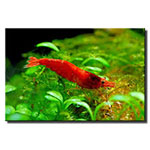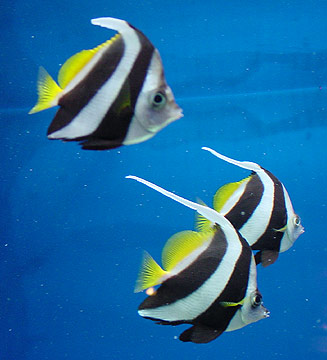Cherry Goldfish

|
Scientific Name: Carassius auratus Price: Upon Request Origin: China Family: Atyidae NOT AVAILABLE NOW |
|
Other Names: Cherry Shrimp, Neocaridina heteropoda, Red Cherry Shrimp, Cherry Red Shrimp, Neocaridina davidi var. red, |
|
Technical Info
Temperature: 22 - 28 ℃
pH: 6.5 - 8
GH: 8 - 12
Max size: 3 cm
Min Tank size: 20 Ltr
Position in Aqua: Bottom swimmer
Description
Cherry Shrimp make gorgeous and functional additions to any peaceful freshwater aquarium. Its brilliant red coloration adds a beautiful ornamental quality while its purposeful pursuit for algae and organic debris makes the Cherry Shrimp an invaluable aquarium cleanup crew.
Food
Cherry Shrimp are omnivores that will consume algae, detritus and left over food. If insufficient food is present, supplement with algae tablets or quality flake food or pellets.
Breeding
If there is a male and female in your aquarium Cherry Shrimp will most likely breed. The female will carry a clutch of yellowish eggs under her tail until they hatch in about 30 days. The newly born shrimp will look like miniature adult shrimp and will eat the same thing as the adults. If breeding these shrimp, it is important to keep them in a breeder aquarium with a sponge filter. This added precaution helps maximize survival of young shrimp.
Compatible with
In their natural environment, cherry shrimp are primarily prey animals. When kept in an aquarium, they are easily targeted by fish as potential food. Even fish too small to eat them may harass them and stress them to death, sometimes biting off limbs. For best results, breeding should take place in isolation. Small, non-aggressive fish such as the harlequin rasbora, neon tetra, cardinal tetra, dwarf corydoras, otocinclus catfish, dwarf gouramis, and some species of killifish can be kept with adult cherry shrimp. However baby shrimp are likely to be eaten by any fish other than the otocinclus and some other herbivorous fish. Most cichlids, including angel fish, will harass and readily eat adults as well. With enough cover and hiding places (live plants such as Java moss work well), one can have a colony of cherry shrimp survive in a tank with larger fish preying on them.

